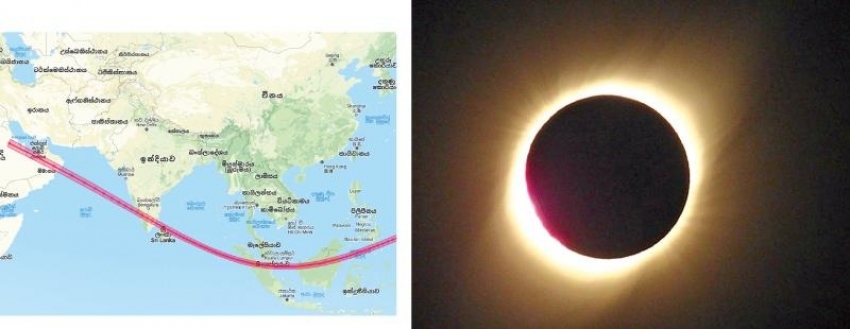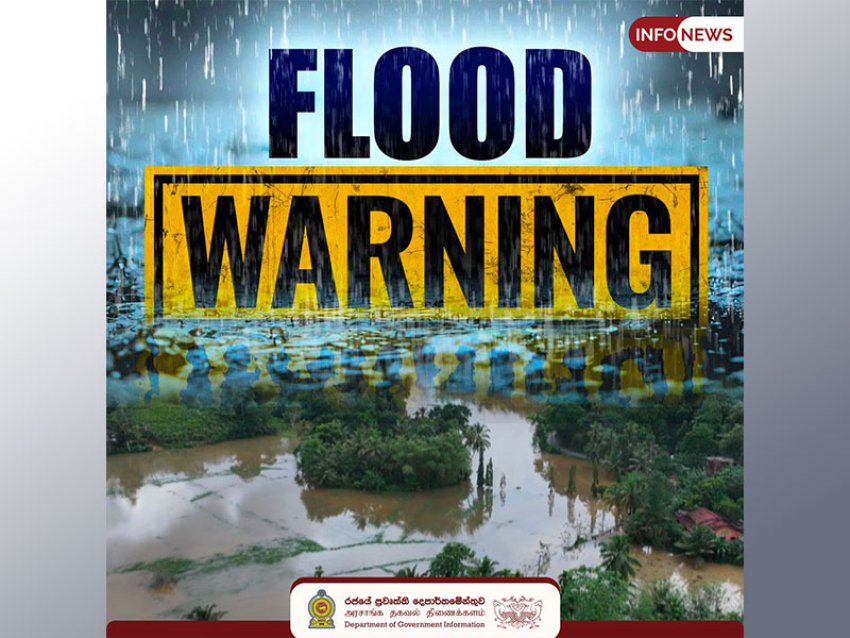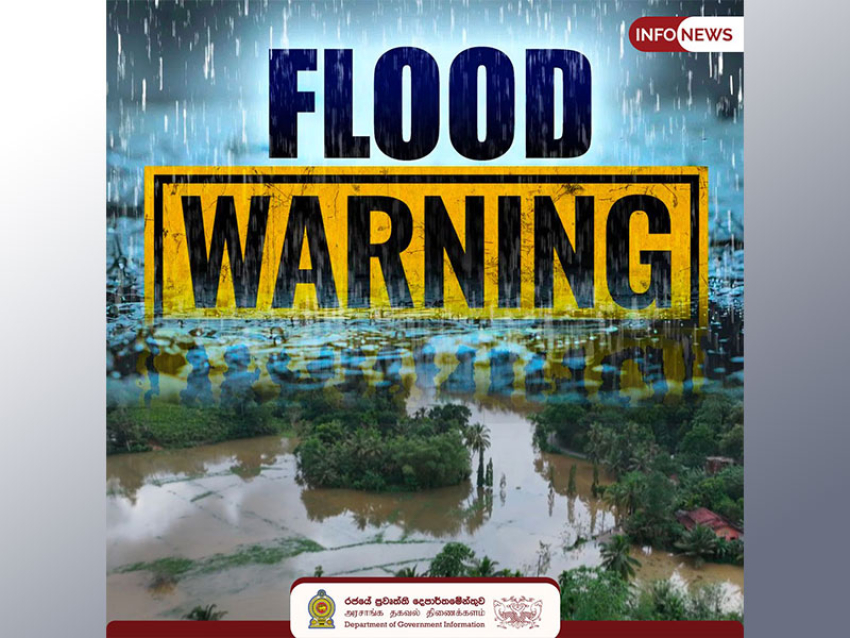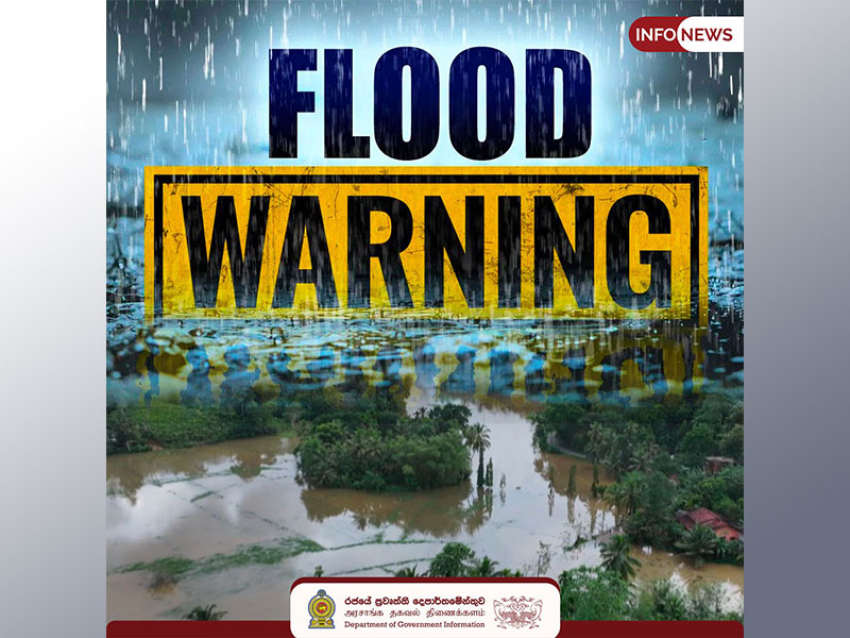An annular solar eclipse occurs when the moon passes in front of the face of the sun, but the Moon’s apparent diameter does not appear large enough in the sky to entirely cover the sun. The black disc of the moon blocks out most of the Sun’s middle, but a sliver of the Sun remains visible. The dark sphere of the moon passing over the bright disc of the sun, eventually creates a red ‘ring of fire’.
The diagram shows the alignment of the Sun, Moon, and Earth during a solar eclipse. The dark gray region between the Moon and Earth, where the Sun is completely obscured by the Moon is called the umbra. A total eclipse can be seen, where the umbra touches the Earth’s surface is a small area. The surrounding larger light gray area is the penumbra, in which a partial eclipse can be seen. An observer in the antumbra, the area of shadow beyond the umbra, will see an annular eclipse.
There are four types of solar eclipses, all occur when the Sun and the Moon are in line with the Earth. A total eclipse occurs when the dark disk of the Moon completely obscures the brightness of the Sun, as a result a solar corona can be visible. An annular eclipse occurs when the apparent size of the Moon is smaller than that of the Sun. Hence, the Sun appears as a very bright ring (annulus) surrounding the dark disk of the Moon. A hybrid eclipse is comparatively rare; it is a shifting eclipse between a total and annular eclipse; at certain points on the surface of the Earth, it appears as a total eclipse, whereas at other points it appears as annular. During a total eclipse, totality occurs, at best only in a narrow track on the surface of Earth, which is called the path of totality, and during an annular eclipse, annularity occurs, at best only in a narrow track on the surface of Earth, which is called the path of annularity. A partial eclipses can usually be seen for observers of thousands of kilometers surrounding the track of an annular or total eclipse.
The Sun’s diameter is about 400 times the Moon’s diameter and the Sun’s distance from the Earth is about 400 times the Moon’s distance. The Sun and the Moon as seen from Earth appear to be the same size, because these ratios are approximately the same and its angular measures about 0.5 degrees of arc. The moon’s orbit around the Earth is not a perfect circle, but an ellipse. Therefore, the distance to the moon from the Earth always changes with time. A total eclipse occurs, when the moon is close to the Earth. It appears larger in the sky, so that during an eclipse the moon can appear to block the entire disc of the sun. During an annular eclipse, the moon is further away from the Earth, and appears smaller in the sky, so it does not entirely cover the disc of the sun. This means that it won’t block the sun entirely, but it will instead turn the sun into an apparent ‘ring of fire’ for the Earth’s observers.
Two or three solar eclipses occur on Earth annually, but total or annular solar eclipses are rare at any particular location because the Moon’s full shadow or umbra exists only along a narrow path on the Earth’s surface. The last total solar eclipse occurred in Sri Lanka on June 20, 1955, and the next total solar eclipse will occur on April 11, 2070. The last annular solar eclipse occurred in Sri Lanka on January 15, 2010, and the upcoming annular solar eclipse is on December 26. The next annular solar eclipse will occur on May 21, 2031.
The ‘ring of fire’ eclipse on December 26 will be visible in Saudi Arabia, Qatar, United Arab Emirates, Oman, India, Sri Lanka, Malaysia, Indonesia, Singapore, Northern Mariana Islands, and Guam. The first location to see the annular eclipse is Saudi Arabia at 6:34 a.m. (Local time) and Guam will be the last place to see the eclipse. The path of the annularity includes Jaffna and Trincomalee in Sri Lanka. The eclipse will be visible as a partial solar eclipse in other areas of the island. The observers in Jaffna and Trincomalee will see the annular phase about 3 minutes. The observers of other areas can see the eclipse as a partial solar eclipse.
The overall duration of visibility of the entire eclipse in Sri Lanka will be three hours and 13 minutes. The eclipse begins in Sri Lanka at 08.09 am and ends at 11.22 a.m. The peak time of the eclipse ‘ring of fire’ begins at 09.34 a.m. in Jaffna and 09.37 a.m. in Trincomalee. The average coverage of the sun which is 94% can be seen from Jaffna and Trincomalee. The coverage percentages of Sun in Anuradhapura 93 per cent, Kandy 90 per cent, Colombo 88 per centand Southern Sri Lanka per cent.
Total or annular eclipses are rare natural phenomena. The timing of the new moon within the eclipse season needs to be more exact for an alignment between the observer on Earth and the centers of the Sun and Moon. If the Moon was in a perfectly on a same orbital plane, there would be solar eclipses every new moon. However, since the Moon’s orbit around the Earth is inclined at an angle of 5.14 degrees to the Earth’s orbit around the Sun, its shadow usually misses Earth. A solar eclipse can only occur when the Moon is close enough to the ecliptic plane during a new moon. A solar eclipse can occur only when the new moon occurs close to one of the points (known as nodes) where the Moon’s orbit crosses the ecliptic.
The Earth’s orbit around the Sun is elliptical and the Moon’s orbit around the Earth is also elliptical. Therefore the apparent sizes of the Sun and the Moon vary, because the Earth’s distance from the Sun and the Moon vary throughout the year. This affects the apparent size of the Sun and the Moon. The magnitude of an eclipse is the ratio of the apparent size of the Moon to the apparent size of the Sun during an eclipse. An eclipse that occurs when the Moon is near its closest distance to Earth can be a total eclipse because the Moon will appear to be large enough to completely cover the Sun’s bright disk. A total eclipse has a magnitude greater than or equal to 1.
Conversely, an eclipse that occurs when the Moon is near its furthest distance from Earth can only be an annular eclipse because the Moon will appear to be slightly smaller than the Sun. The magnitude of an annular eclipse is less than 1.0. The annular eclipse on December 26 has an average magnitude of 0.97.
We can predict eclipses hundreds of years into the future because we know the orbits of the Earth, Sun and Moon. An eclipse cycle takes place when eclipses in a series are separated by a certain interval of time. This happens when the orbital motions of the bodies form repeating harmonic patterns. Many eclipse cycles (more than 20) have been identified and recorded, which help predict solar and lunar eclipses. For example, ‘Saros cycle’, results in a repetition of a solar or lunar eclipse every 6,585 days; ‘Babylonian cycle’ is a repetition of eclipse every 441 years.
There are special kinds of eclipses which occur in space. An astronomical transit is a phenomenon when a celestial body passes directly between a larger body and the observer. As viewed from a particular vantage point, the transiting body appears to move across the face of the larger body, covering a small portion of it. Cases where the nearer object appears larger and completely hides the more distant object are known as occultations. Both transit s and occultations are a special type of eclipses. The gas giant planets, Jupiter, Saturn, Uranus and Neptune have many moons and thus frequently display eclipses. A binary star system consists of two stars that orbit around their common center of mass.
The movements of both stars lie on a common orbital plane in space. When this plane is closely aligned with the location of an observer, the stars can be seen to pass in front of each other. The result is a type of extrinsic variable star system called an eclipsing binary.
An eclipse is a natural phenomenon. However, in some ancient and modern cultures, solar eclipses were attributed to supernatural causes or regarded as bad omens. A total solar eclipse can be frightening to people who are unaware of its astronomical explanation, as the Sun seems to disappear during the day and the sky darkens in a matter of minutes.
If you are planning to be an eye witness of the eclipse or willing to record it using your still or video camera and a telescope, special solar filters should be used to protect your eyes and equipment. If you are looking directly at the Sun without wearing a proper eye protection, it can cause permanent eye damage or blindness.
A special protective eye-wear or eclipse glasses are needed to observe the Sun or watch an eclipse. The special solar filters should be used to cover the front lens of any photo or tele-equipment to record the eclipse. Basic sunglasses, sunglasses even with UV protection, X ray or other films, shaded glasses are insufficient to protect your eyes from ultraviolet rays emitting from the Sun.
It is technically safe to view the solar eclipse with indirect viewing techniques, such as reflected off water or projection of an image to a screen using a mirror.
If you are outside the visible path of eclipse, you can watch a live webcast online, courtesy of the Slooh community observatory. Slooh will begin broadcasting live views of the eclipse at 8.00 am on December 26. You can watch it via Slooh.com or on YouTube.





















